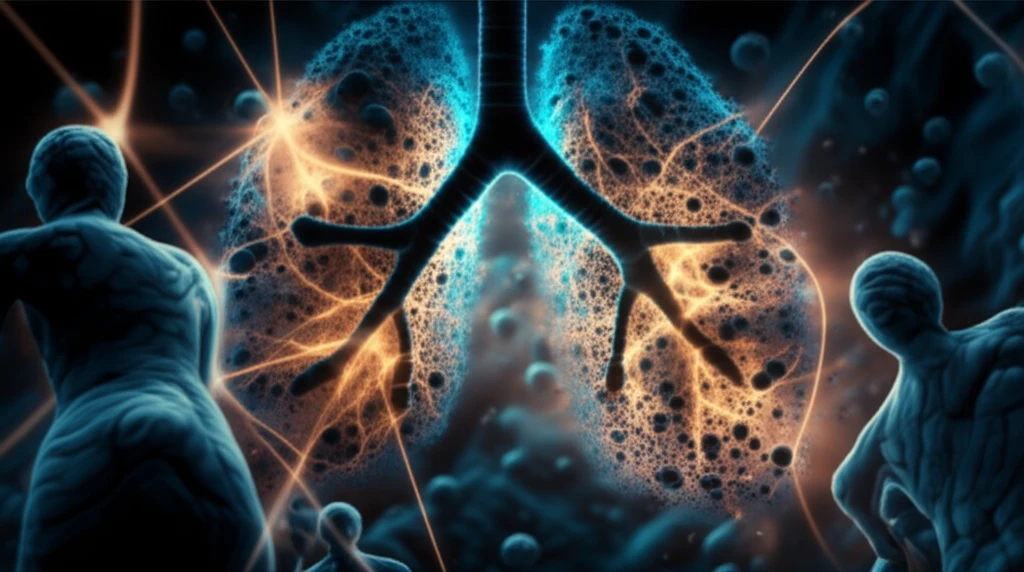
Dust to Doom: How Coal Particles Trigger Lung Disease
"New research uncovers how coal dust leads to pneumoconiosis, offering hope for prevention and treatment."
For generations, coal mining has powered industries, but it casts a long shadow on miners' health. One of the most serious consequences is coal worker's pneumoconiosis (CWP), also known as black lung disease. This debilitating condition arises from the long-term inhalation of coal dust, leading to inflammation and scarring of the lungs. Despite advancements in dust control, CWP remains a significant threat, highlighting the urgent need to understand its underlying mechanisms.
At the heart of CWP is the body's immune response to inhaled coal dust. Alveolar macrophages (AMs), the lungs' primary defense cells, engulf these particles. In CWP, however, this process goes awry. Instead of clearing the dust, AMs accumulate in the lungs, triggering a cascade of events that leads to chronic inflammation and fibrosis. Understanding how these immune cells contribute to disease progression is crucial for developing effective treatments.
Recent research has focused on the role of specific signaling pathways in AMs, particularly the tumor necrosis factor-alpha (TNF-α) pathway. TNF-α is a potent inflammatory cytokine, and its signaling through TNF receptors (TNFRs) is implicated in various lung diseases. A new study sheds light on how the TNF-α-TNFR pathway promotes both autophagy inhibition and apoptosis in AMs, worsening CWP. Let’s delve into the details of this research and explore its implications for future therapies.
TNF-α-TNFR Signaling: The Key to Unlocking Lung Damage

The study, published in the "Journal of Cellular Physiology" in 2018, investigated the impact of the TNF-α-TNFR pathway on AMs in the context of CWP. Researchers collected AMs from control subjects, individuals exposed to coal dust, and patients with CWP. They then analyzed the expression of TNF-α and TNFR1 (a major TNF-α receptor) and examined the processes of autophagy and apoptosis in these cells.
- Increased TNF-α and TNFR1: CWP alveolar macrophages exhibited higher levels of TNF-α and TNFR1.
- Autophagy Boost: Autophagy, a cellular "clean-up" process, was elevated in CWP macrophages.
- Apoptosis Surge: Programmed cell death (apoptosis) was also more frequent in CWP macrophages.
- TNF-α Treatment: Adding TNF-α increased TNF-α/TNFR1 and reduced autophagy while boosting apoptosis.
- Anti-TNF-α Treatment: Blocking TNF-α reversed these effects, promoting autophagy and curbing apoptosis.
Hope for the Future: Targeting TNF-α-TNFR for CWP Treatment
This research provides valuable insights into the pathogenesis of CWP and highlights the TNF-α-TNFR pathway as a potential therapeutic target. By inhibiting this pathway, it may be possible to reduce inflammation, promote autophagy, and prevent excessive apoptosis in AMs, ultimately slowing the progression of the disease. Future studies are needed to further elucidate the mechanisms involved and to develop targeted therapies that can effectively combat CWP and improve the lives of coal workers.
